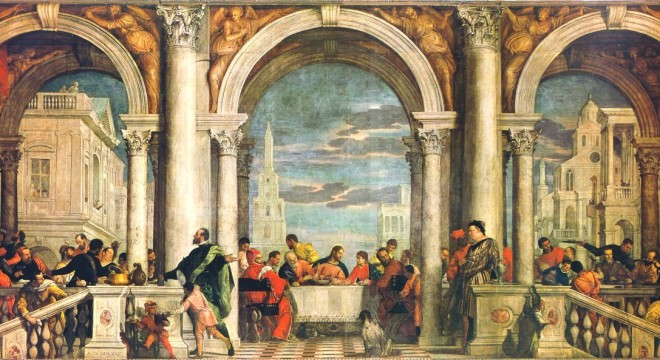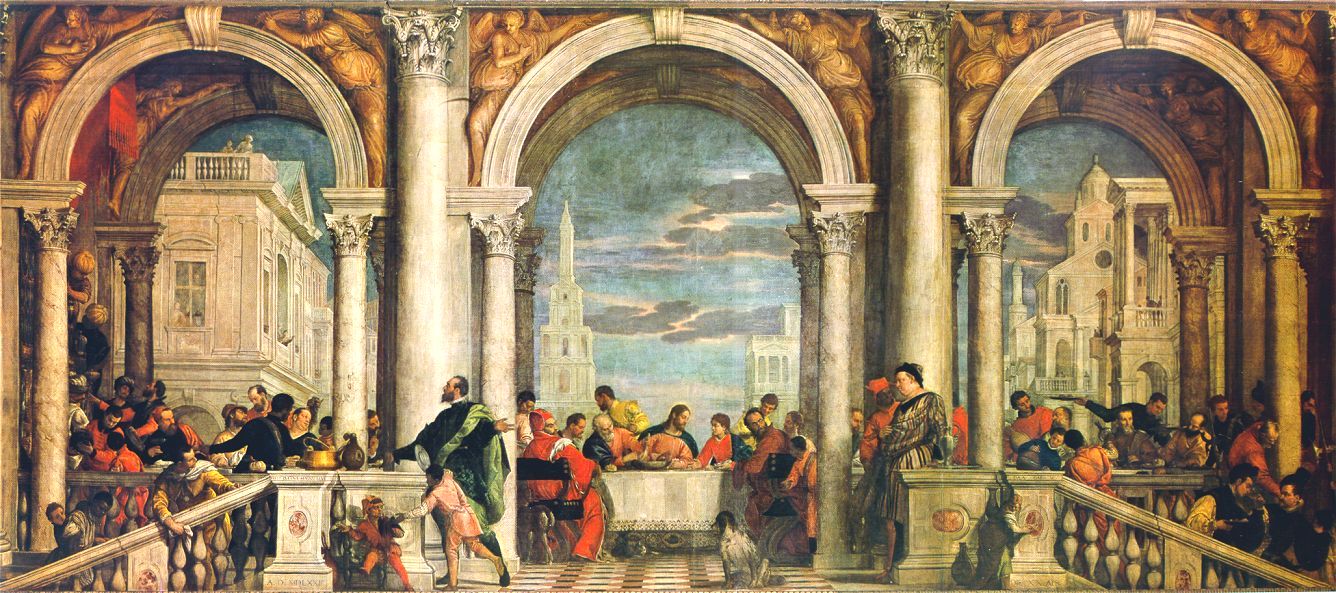In 1573 one of the great Venetian masters Paolo Veronese (Paolo Cagliari of Verona) finished Christ in the House of Levi. The painting depicts a merry scene, with courtly jesters and the elite of Venice surrounding Christ for a marvelous feast.
Originally this painting was titled Last Supper, however, since the painting was created in the height of Counter Reformation it received much criticism from the Holy Office of the Inquisition because it showed creatures so close to Christ. This prompted accusations of Veronese for impiety, and demanded he make the necessary changes at his own expense. Unwilling to solve this problem by destroying the painting, Veronese simply changed the name of the painting to Christ in the House of Levi which implied a much less formal evening.
The painting depicts an open loggia with giant columns and three monumental arches. In the background through the arches one can see more magnificent buildings of Venice cityscape.
Christ in the House of Levi is 18’6″ x 42’6″, clearly a colossal sized painting, and is painted with oil on canvas. It resides in Galleria dell’Accademia, Venice.


